Kwabena Amponsah-Kaakyire
Explaining Translationese: why are Neural Classifiers Better and what do they Learn?
Oct 24, 2022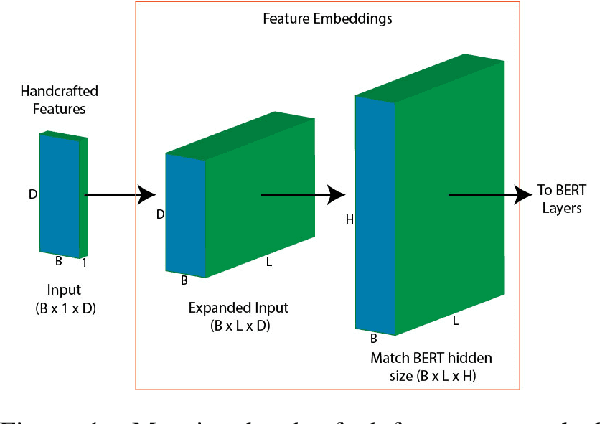
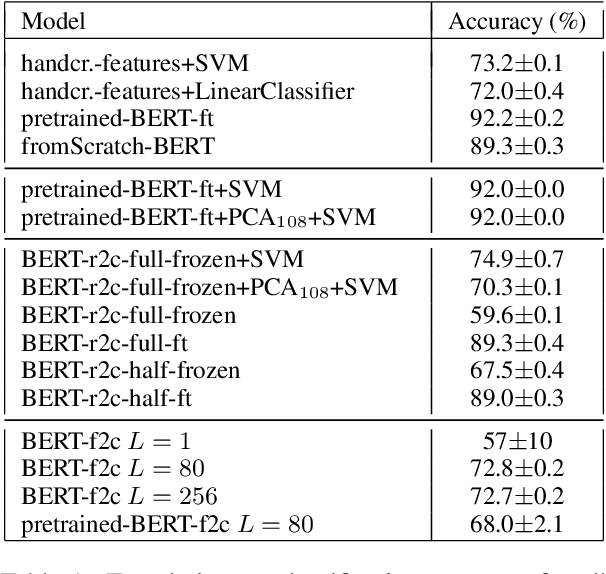
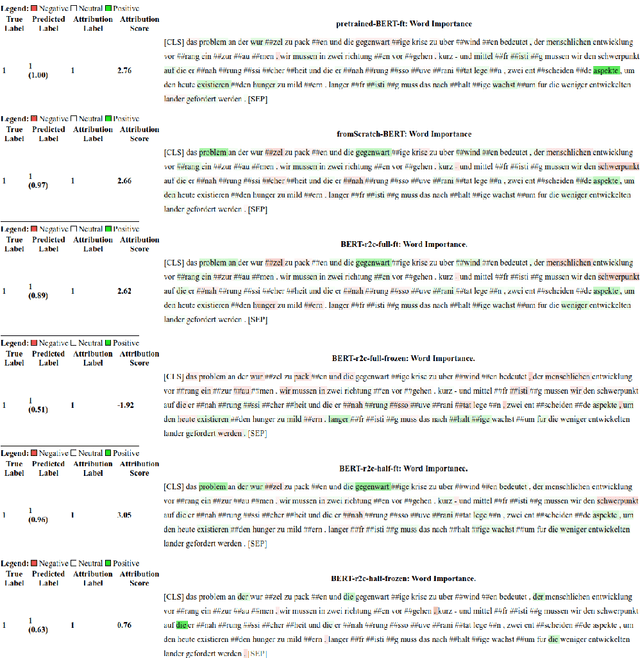
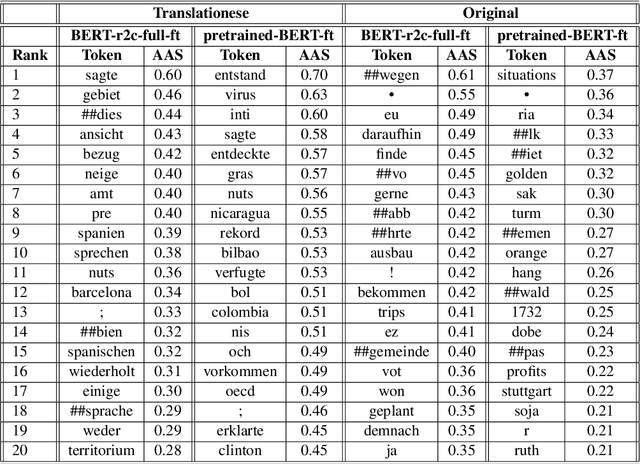
Abstract:Recent work has shown that neural feature- and representation-learning, e.g. BERT, achieves superior performance over traditional manual feature engineering based approaches, with e.g. SVMs, in translationese classification tasks. Previous research did not show $(i)$ whether the difference is because of the features, the classifiers or both, and $(ii)$ what the neural classifiers actually learn. To address $(i)$, we carefully design experiments that swap features between BERT- and SVM-based classifiers. We show that an SVM fed with BERT representations performs at the level of the best BERT classifiers, while BERT learning and using handcrafted features performs at the level of an SVM using handcrafted features. This shows that the performance differences are due to the features. To address $(ii)$ we use integrated gradients and find that $(a)$ there is indication that information captured by hand-crafted features is only a subset of what BERT learns, and $(b)$ part of BERT's top performance results are due to BERT learning topic differences and spurious correlations with translationese.
Comparing Feature-Engineering and Feature-Learning Approaches for Multilingual Translationese Classification
Sep 15, 2021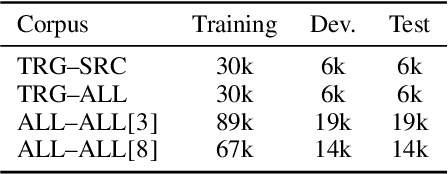
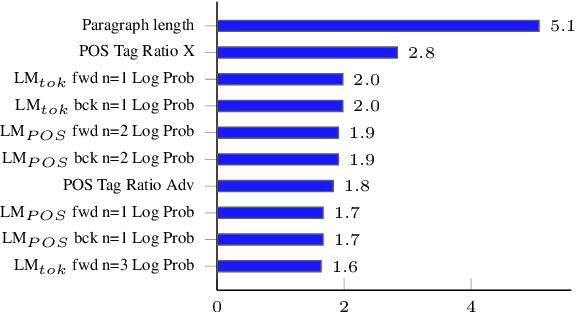
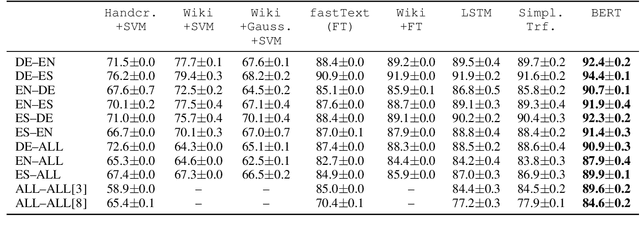
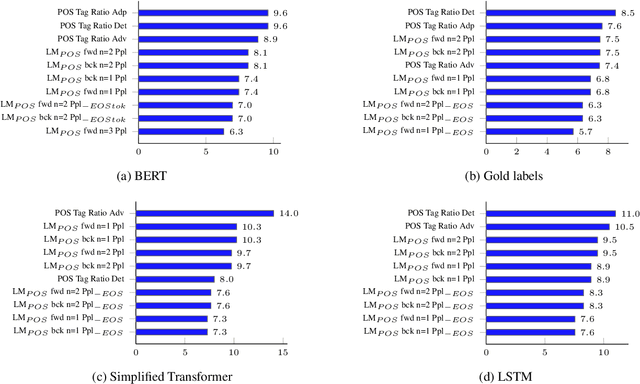
Abstract:Traditional hand-crafted linguistically-informed features have often been used for distinguishing between translated and original non-translated texts. By contrast, to date, neural architectures without manual feature engineering have been less explored for this task. In this work, we (i) compare the traditional feature-engineering-based approach to the feature-learning-based one and (ii) analyse the neural architectures in order to investigate how well the hand-crafted features explain the variance in the neural models' predictions. We use pre-trained neural word embeddings, as well as several end-to-end neural architectures in both monolingual and multilingual settings and compare them to feature-engineering-based SVM classifiers. We show that (i) neural architectures outperform other approaches by more than 20 accuracy points, with the BERT-based model performing the best in both the monolingual and multilingual settings; (ii) while many individual hand-crafted translationese features correlate with neural model predictions, feature importance analysis shows that the most important features for neural and classical architectures differ; and (iii) our multilingual experiments provide empirical evidence for translationese universals across languages.
Massive vs. Curated Word Embeddings for Low-Resourced Languages. The Case of Yorùbá and Twi
Dec 05, 2019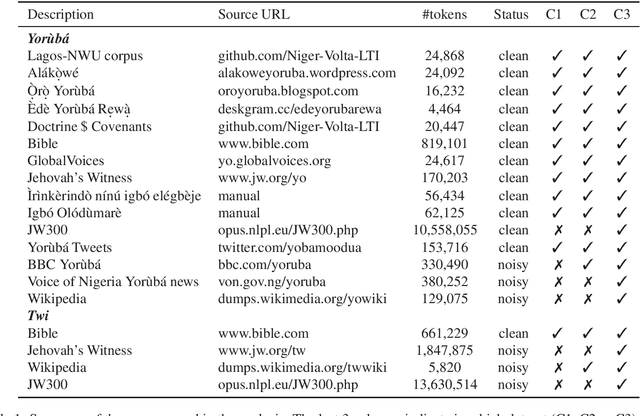
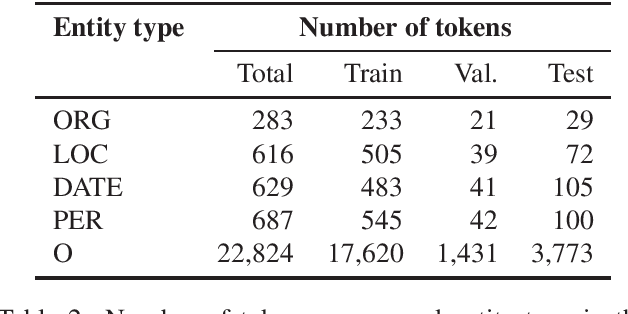
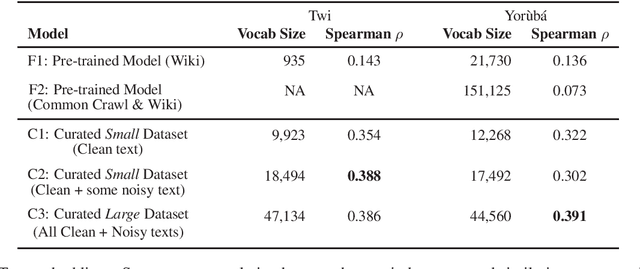

Abstract:The success of several architectures to learn semantic representations from unannotated text and the availability of these kind of texts in online multilingual resources such as Wikipedia has facilitated the massive and automatic creation of resources for multiple languages. The evaluation of such resources is usually done for the high-resourced languages, where one has a smorgasbord of tasks and test sets to evaluate on. For low-resourced languages, the evaluation is more difficult and normally ignored, with the hope that the impressive capability of deep learning architectures to learn (multilingual) representations in the high-resourced setting holds in the low-resourced setting too. In this paper we focus on two African languages, Yor\`ub\'a and Twi, and compare the word embeddings obtained in this way, with word embeddings obtained from curated corpora and a language-dependent processing. We analyse the noise in the publicly available corpora, collect high quality and noisy data for the two languages and quantify the improvements that depend not only on the amount of data but on the quality too. We also use different architectures that learn word representations both from surface forms and characters to further exploit all the available information which showed to be important for these languages. For the evaluation, we manually translate the wordsim-353 word pairs dataset from English into Yor\`ub\'a and Twi. As output of the work, we provide corpora, embeddings and the test suits for both languages.
 Add to Chrome
Add to Chrome Add to Firefox
Add to Firefox Add to Edge
Add to Edge